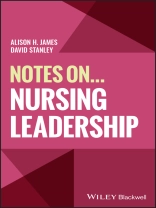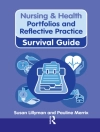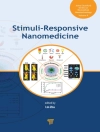NOTES ON… NURSING LEADERSHIP
Unlock the secrets to effective nursing leadership with this essential guide
In the ever-evolving landscape of healthcare, leadership capability is a vital skill for nurses, however, leadership development and application within the field is rarely addressed during training. This essential resource ensures nurses are equipped with the guidance needed to develop as effective and resilient leaders within the workplace.
Centred on the clinical nurse’s perspective, this text serves as a practical guide to applying nursing leadership concepts and provides a timely and authoritative overview of what it means to be a nurse leader in the health service. Throughout the text, the authors provide vignettes that share their personal experiences, highlight the value of applying nursing leadership, describe the different components of leadership, and more.
Notes On… Nursing Leadership is a must-read for undergraduate and trainee nurses looking for a concise introductory text that links current key debates and thinking in leadership to nursing practice.
It is also an invaluable resource for qualified and practicing nurses wanting to develop their leadership skills, broaden their leadership potential, or inspire and support other nurses in their approach to leadership.
Tabella dei contenuti
Preface x
Acknowledgements xii
About the Authors xiii
About the Notes On… Series xv
1 Introduction 1
1.1 About This Book 1
1.2 Leadership and Management are Different! 4
1.3 The Difference 5
1.3.1 Management 5
1.3.2 Leadership 6
1.4 The Challenges Leaders and Managers Face 7
1.5 Summary 9
2 What Is This Leadership Thing? 11
2.1 Introduction 11
2.2 Defining Leadership 12
2.3 Definition of Nurse Leadership 14
2.4 Theories of Leadership 15
2.4.1 The Great Man Theory 15
2.4.2 The Heroic Leader 15
2.4.3 The Big Bang Theory 15
2.4.4 Trait Theory 16
2.4.5 Style Theory 16
2.4.6 Situational or Contingency Theory 17
2.4.7 Transformational Leadership Theory 17
2.4.8 Transactional Leadership Theory 18
2.4.9 Authentic/Breakthrough Leadership 19
2.4.10 Servant Leadership Theory 19
2.4.11 Shared/Collaborative Leadership 21
2.4.12 Compassionate Leadership 21
2.4.13 Congruent Leadership 22
2.4.14 Conscious Leadership 23
2.5 Summary 24
3 Characteristics of Effective Nurse Leaders 25
3.1 Introduction 25
3.2 Qualities of Effective Nurse Leaders 26
3.3 Hard Skills for Effective Nurse Leadership 27
3.3.1 Advanced Clinical Knowledge and Technical Skills 27
3.3.2 The Healthcare System, Advocacy and Policy 27
3.3.3 The Day- to- Day Clinical Activities of Your Role 28
3.3.4 Conflict Management, Networking and Negotiation 28
3.3.5 Finance, Business and Human Resource Management 28
3.3.6 Strategic Management 29
3.3.7 Political Awareness 29
3.3.8 Professional Development 29
3.4 Soft Skills for Effective Leadership 30
3.4.1 Sense of Teamwork and Collaboration 30
3.4.2 Creativity and Innovation 31
3.4.3 Dedication to Excellence 32
3.4.4 Create a Culture That Drives High Reliability and Quality 32
3.4.5 Being Approachable 33
3.4.6 Honesty and Integrity 33
3.4.7 Excellent Interpersonal Skills and Effective Emotional Intelligence 33
3.5 Other Characteristics to Consider 35
3.5.1 Courage 35
3.5.2 Vulnerability 35
3.5.3 Compassion and Empathy 36
3.6 The Attributes “Least” Likely to Foster Effective Nurse Leadership 36
3.6.1 Visionary 36
3.6.2 Controlling 37
3.6.3 Bias/Favouritism 37
3.6.4 Dishonesty 37
3.7 Summary 37
4 Self- Care for Leadership Effectiveness 39
4.1 Introduction 39
4.2 Self- Care 39
4.3 Caring for Self 41
4.4 Building Self- Care and Self- Compassion 43
4.5 Mindfulness 44
4.6 Resilience 45
4.7 Summary 46
5 Leadership for Innovation and Change 47
5.1 Introduction 47
5.2 Tools for Change 49
5.2.1 SWOT Analysis 49
5.2.2 Stakeholder Analysis 50
5.2.3 Pettigrew’s Change Model 50
5.2.4 The Change Management Iceberg 51
5.2.5 PEST or STEP 52
5.2.6 Kotter’s Eight- Stage Change Process 52
5.2.7 Nominal Group Technique 53
5.2.8 Process Re- Engineering 54
5.2.9 Force Field Analysis (FFA) 55
5.2.10 Initiating, Envisioning, Playing, Sustaining: A Theoretical Synthesis for Change 56
5.2.11 Seven S- Action Words Model for Organisational Change 57
5.2.12 Beckhard and Harris’s Change Equation 57
5.2.13 People- Mover Change Model: Effectively Transforming an Organisation 57
5.2.14 Instituting Organisational Change: A Examination of Environmental Influences 58
5.3 Change Is Never Simple Even with a Model 58
5.4 Resistance to Change 59
5.5 Successfully Dealing with Change 61
5.6 Leadership, Innovation and Change are Linked 62
5.7 Summary 64
6 Leadership and Teams 66
6.1 Introduction 66
6.2 Healthcare Teams Defined 67
6.2.1 A Group 68
6.2.2 A Team 68
6.3 The Value of Teamwork 69
6.4 Types of Established Teams 71
6.4.1 High- Performance Teams 71
6.4.2 OK or Functional Teams 72
6.4.3 Struggling Teams 73
6.4.4 Self- Led Teams 74
6.5 Building Powerful Teams 76
6.6 Support and Challenge 77
6.6.1 Support 77
6.6.2 Challenge 77
6.7 Team Building 78
6.8 Team Roles 79
6.9 Leadership and Teams 81
6.10 Trust 81
6.11 Summary 83
7 Leadership and Networking 85
7.1 Introduction 85
7.2 Networking and Influencing for Change 86
7.3 The Skills of Networking 86
7.4 Summary 90
8 Leadership and Values 91
8.1 Introduction 91
8.2 Change and Values 92
8.3 Facing the Challenges and Balancing Power 94
8.4 Leadership and Its Role in Social Justice 96
8.5 Summary 97
9 The Challenges of Nurse Leadership 98
9.1 Introduction 98
9.2 Leading During Challenging Times 99
9.3 Examples of Leading Through Crises 100
9.4 Leading with Self- Care 101
9.5 Summary 102
10 Followership 104
10.1 Introduction 104
10.2 Defining Followership 105
10.3 Follower Responsibilities 105
10.4 Good Followers 107
10.5 Poor Followers 109
10.6 Summary 110
References 111
Index 134
Circa l’autore
Alison H. James, DAHP, MA, PGCE, BA, DIP HE, RGN, BA, SFHEA, is a Reader in the School of Healthcare Sciences at Cardiff University, Wales, UK, where she teaches and researches in healthcare leadership. Before returning to Wales in 2013, Alison worked in clinical practice and higher education in Oxford. She is the co-author of Clinical Leadership in Nursing and Healthcare.
David Stanley, Nurs D, MSC HS, BA NG, DIP HE, GRAD CERT HPE, worked through his formative career in several hospitals and clinical environments in Australia. After several years of volunteer work in Africa, he moved to the UK and worked as a Coordinator of Children’s Services and as a Nurse Practitioner. He developed the Congruent Leadership theory and has taught at several Australian Universities.












